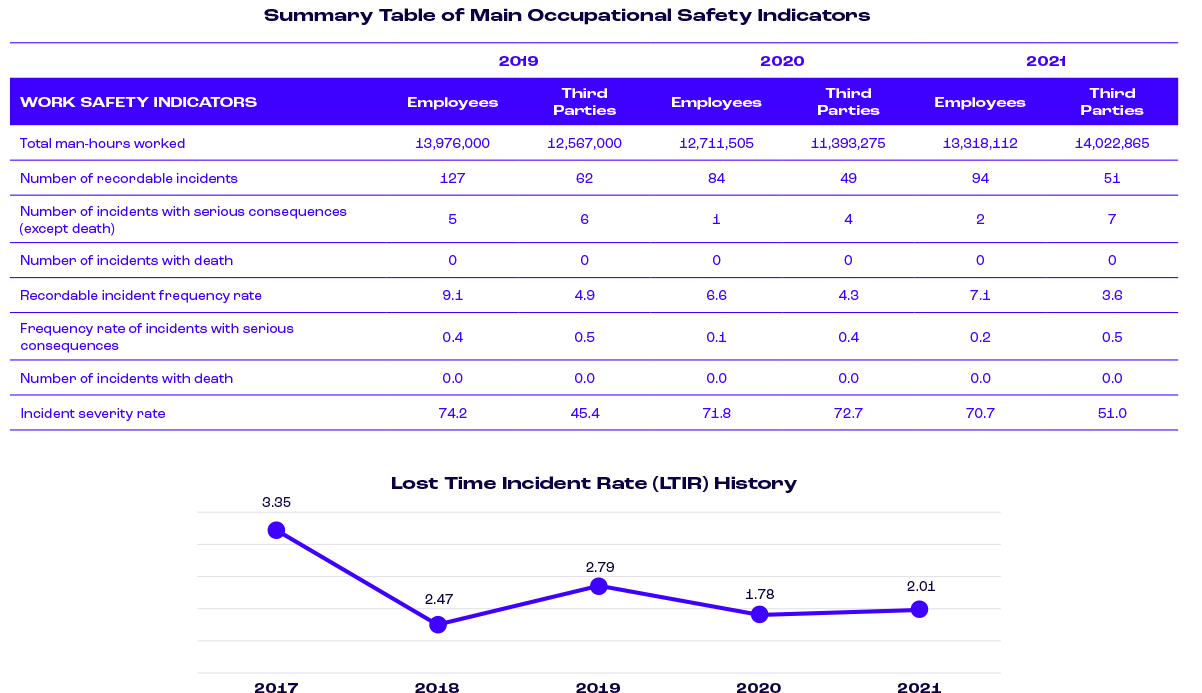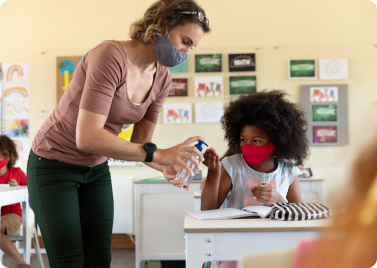
The company applies the Safe Work Management System in all units to mitigate risks and avoid accidents with employees
AAct safely is one of BRK’s values. The company has, in its corporate culture, the directive of putting the preservation of life first. To this end, it has structured and applies the Safe Work Management System (SWMS) to 100% of its units.
SWMS is a safety-focused program for the elimination and/or mitigation of high-risk incidents, developed by Utility Risk Management, a specialist consultancy in Canada. The URM itself carries out the implementation of the Program, based on the models and processes that are verified through on-site audits (2ª part).
How does SWMS work?
SWMS adopts a risk management and incident prevention methodology based on five pillars and 20 structuring elements. The purpose of this framework is to identify potentially high-risk activities and define adequate controls through safety barriers in order to eliminate and/or mitigate the potential for serious or fatal incidents at work.

Pillars of the Safe Work Management System
• Leadership
• Risk management
• Education
• Control
• Monitoring
The SWMS defines means of control through the daily planning of activities for tasks involving both its own professionals and those of contracted companies. The leaders have a fundamental role in the implementation of the program, through the implementation of Safe Work Observation (OTS), monitoring and support in the execution of action plans arising from investigations of high-risk incidents and active participation in the monthly meetings of the Safety and Incident Review Committee.
In general terms, 36 Occupational Safety guidelines and nine guidelines related to Critical Tasks were prepared. These guidelines define means and standards for carrying out field activities, always focusing on the control of high-risk incidents.
All SWMS program guidelines applicable to in-house personnel are fully discussed and followed by the contractors. In all units, before the start of any contracting and formalization of contracts, the companies receive the HSE Manual for Contractors and, before the start of activities, a document verification program and face-to-face integration is carried out with BRK’s technical staff.
The SWMS implementation is already showing positive results: in 2020, the number of high-risk incidents decreased by 44% compared to 2018. In the same period, there was a 35% reduction in the frequency rate of total incidents and a 24% reduction in the frequency of incidents with leave.
The Occupational Safety area of the corporate office is responsible for the strategic definition and corporate guidelines for the SWMS implementation and practice. Each of the units also has its own local occupational health and safety area, responsible for applying the System and carrying out training and qualifications on occupational health and safety
BRK employees undergo periodic training on SWMS. The safety culture addressed by the Program is also strengthened with communication and awareness campaigns, such as those that take place during the Internal Workplace Accident Prevention Week (SIPAT).
Continuous improvement
SWMS is supported by a series of regulations and work instructions that guide the adoption of best practices to mitigate risks and ensure the safety of people and assets. The assessment of the adherence and effectiveness of these guidelines is continually reassessed, with the aim of ensuring alignment and adherence to the highest standards.
Main corporate security guidelines:
General:
• Recognition and consequences policy
• PPE management
• Occupational Health Medical Control Program (PCMSO)
• Special Activities Procedure
• Execution of work in confined spaces
• PEMPS (Medical Emergency and First Aid Procedure)
• PPCA (Hearing Protection and Conservation Program)
• Biosafety Program
• PPCR (Breathing Protection and Conservation Program)
• Brigadier’s Medical Aptitude Procedures
• Environment, Occupational Health and Safety Procedure for administrative areas
• Emergency preparedness and response
• Daily Work Safety Planning (PDST)
• Safe Work Observation Procedure (OTS)
• Procedure for Incident Communication and Investigation
Critical Tasks
• Protection against being run over by heavy machinery
• Landslide protection in trench digging
• Control of aerial and underground interference
• Protection against being run over by public vehicles
• Protection against fall from heights
• Electric shock protection
• Protection against suffocation and inhalation of toxic gases
• Hydraulic power control
• Protection against falling objects when lifting and moving loads

With diversity and inclusion as a priority, BRK accelerates innovation and efficiency in its business BRK promotes discrimination-free work environment and acts to provide equal opportunities Leadership, protagonism and high performance. People development pillars at BRK To mitigate risks and avoid accidents, BRK has a Safe Work Management System in all units Apoio a iniciativas sociais por uma Estratégia ISP, padroniza a gestão e o acompanhamento dos investimentos Sanitation inclusion and benefits for the population Supporting the socioeconomic development of the regions where it operates is a strategic pillar Training, benefits and welcoming programs contribute to the pride of belonging to BRK Local community involvement based on participatory processesSee too








